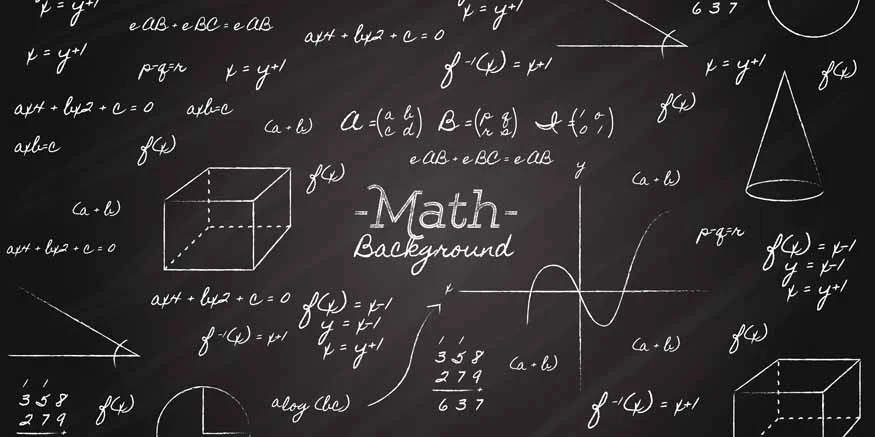Dive into the fascinating world of algebraic identities, where numbers dance in harmony and equations reveal hidden patterns. Join us on an exciting journey as we explore the foundations of algebraic identities, their importance, and their practical applications in solving real-world problems. Prepare yourself for an engaging adventure into the realm of mathematics, uncovering the beauty behind what may seem like complex terms.
Also read: Understanding Polynomial Expressions
What are Algebraic Identities?
Algebraic identities are powerful tools in mathematics that help simplify complex equations by offering shortcuts and patterns. These identities represent equations that are true for all values of the variables involved.
Basic Concepts and Definitions
Let’s begin with the basic concepts and definitions to kickstart your understanding of algebra.
- Variables
- Constants
- Coefficients
- Exponents
- Operations
Variables act as placeholders for unknown or changing values, enabling the representation of quantities that may vary within equations. Symbols like xxx, yyy, or zzz allow for the flexible representation of numerical values, facilitating equation formulation and solution in diverse contexts.
Constants offer stability and unchanging values in algebraic expressions, representing numerical quantities that remain consistent during calculations. They include values like 222, 555, or π\piπ, providing fixed references within mathematical operations for reliable computation and comparison.
Coefficients exert significant influence on algebraic expressions, dictating the scale and magnitude of variable components within equations. These numerical factors, such as 333 in 3x3x3x or 222 in 2y2y2y, determine the degree of impact each variable has on the overall expression.
Exponents express repeated multiplication efficiently, signifying the potency of numerical bases in algebra. Represented by expressions like 232^323 or x2x^2×2, they condense complex relationships into concise forms, facilitating streamlined computation and succinct representation in algebraic expressions.
Algebraic operations, like addition, subtraction, multiplication, and division, are essential for transforming and evaluating expressions, solving equations, and analysing mathematical relationships. Mastering these operations is vital for solving algebraic problems accurately and efficiently.
Commonly Used Identities
Discover essential algebraic identities commonly used in mathematics.
- Distributive Property
- Commutative Property
- Associative Property
- Difference of Squares
- Quadratic Formula
The distributive property, represented as a(b+c)=ab+aca(b + c) = ab + aca(b+c)=ab+ac or a(b−c)=ab−aca(b – c) = ab – aca(b−c)=ab−ac, spreads multiplication across addition or subtraction. This property is essential for quickly solving equations and simplifying algebraic expressions.
The commutative property states that the order of addition or multiplication does not affect the result, aiding in mental maths. For real numbers or algebraic expressions aaa and bbb, these properties can be written as a+b=b+aa + b = b + aa+b=b+a and ab=baab = baab=ba.
In algebraic expressions, the associative property governs grouping. This can be represented as follows: (a+b)+c=a+(b+c)(a + b) + c = a + (b + c)(a+b)+c=a+(b+c) for addition and (ab)c=a(bc)(ab)c = a(bc)(ab)c=a(bc) for multiplication.
The difference of squares factorises the difference between perfect squares. According to this identity, a2−b2a^2 – b^2a2−b2 can be factored as (a+b)(a−b)(a + b)(a – b)(a+b)(a−b), where aaa and bbb are real numbers or algebraic expressions.
The quadratic formula solves equations of the form ax2+bx+c=0ax^2 + bx + c = 0ax2+bx+c=0, where aaa, bbb, and ccc are real numbers (a≠0a \neq 0a=0). The formula x=−b±b2−4ac2ax = \frac{{-b \pm \sqrt{{b^2 – 4ac}}}}{2a}x=2a−b±b2−4ac helps find real or complex roots in algebra efficiently.
Understanding the Components
Learn how algebraic expressions are composed.
- Roles of Variables
- Constants and Coefficients
- Exponents and Their Significance
- Interactions of Components
Variables indicate numbers that can change in algebraic identities by acting as stand-ins for unknown or varying values. In y=mx+cy = mx + cy=mx+c, xxx and yyy represent independent and dependent variables, respectively.
Constants are fixed values in algebraic expressions, providing stability. Coefficients multiply variables, determining their scale. In 3x+23x + 23x+2, 333 is xxx’s coefficient, 222 is a constant. Recognizing their roles is key to understanding expressions.
Exponents signify repeated multiplication of a base, crucial for expressing powers and roots. For instance, 232^323 means 222 multiplied by itself three times, resulting in 888. They simplify expressions, efficiently represent repeated multiplication, and solve equations involving powers and roots.
Understanding interactions between variables, constants, coefficients, and exponents is crucial for algebraic expression manipulation. Variables combine with coefficients to form terms, constants aid in comparison, and exponents dictate term potency. This comprehension facilitates equation manipulation and meaningful problem-solving.
Factorization
Let’s explore the simplification of algebraic expressions through factorization.
Principles of Factorization
Factorization simplifies algebraic expressions by identifying common factors and applying special identities like the difference of squares. This process enhances efficiency in expression simplification and solution.
Techniques and Methods
Various techniques exist for factoring algebraic expressions. These include factoring by grouping and factoring trinomials. Higher-order polynomials can be factored using methods like the rational root theorem or synthetic division, providing versatile tools for simplification.
Factoring Polynomials
Factoring polynomials requires strategies tailored to different degrees. Quadratic polynomials use methods like the quadratic formula. Cubic polynomials employ advanced techniques like the factor theorem. Higher-order polynomials combine methods to identify roots and factors systematically.
Applications of Factorization
Factorization techniques are applied across disciplines like physics, engineering, and finance. In maths, they simplify equations and explore relationships. Real-world uses include optimising resources and analysing systems. Understanding factorization empowers individuals to tackle diverse challenges.
Also read: What is Vedic maths for Kids?
Verification
Learn how to verify the correctness of algebraic conclusions.
Methods for Identity Verification
Identity verification employs techniques like direct substitution and algebraic manipulation to confirm validity. Mathematical induction provides a rigorous framework for verifying identities across all variable values.
Proof Techniques
Proof techniques provide structured approaches for confirming algebraic identity validity. Direct proof deduces truth from axioms and proven results. Proof by contradiction assumes negation and shows contradiction to prove the statement. Mathematical induction proofs an identity by establishing it for a base case and demonstrating its validity for all consecutive cases.
Algebraic Examples of Verification
Concrete examples and step-by-step solutions clarify verification methods’ practical application. Illustrative examples showcase direct substitution and algebraic manipulation techniques. Step-by-step solutions demonstrate direct proof, proof by contradiction, and mathematical induction application, enhancing understanding and confidence.
Illustrations
Discover algebraic concepts through visuals for better understanding.
Visual Representations
Visual representations enhance understanding in algebra. Diagrams, graphs, and illustrations offer intuitive insights into abstract concepts. For instance, graphing quadratic equations illustrates the relationship between coefficients and graphs. Geometric models, like the area model for multiplication, aid in conceptual understanding.
Real-world Algebraic Examples
Practical applications of algebraic identities in finance, engineering, and physics make abstract concepts relevant. In finance, they model compound interest and loan amortisation. In engineering, they design and analyse structures and circuits. In physics, they formulate equations like Newton’s laws and Ohm’s law.
Step-by-Step Solutions
Clear step-by-step solutions reinforce understanding and confidence in algebraic problem-solving. They guide learners through applying identities and techniques to solve equations, simplify expressions, and verify identities. Each stage promotes understanding and skill in using algebraic concepts.
Also read: Famous Problems in Mathematics and their Solutions
Practice Problems for Application
Practice problems are essential for applying concepts and honing skills. They cover diverse difficulty levels, helping learners build proficiency gradually. By solving these problems, learners reinforce understanding, identify areas for improvement, and develop problem-solving strategies. Practice fosters mastery and fluency in algebraic problem-solving.
Mastering algebraic identities is key to simplifying expressions, solving equations, and exploring mathematical relationships. From variables to factorization, these concepts are essential for problem-solving and offer insights into the beauty of algebraic reasoning.
At EuroSchool, we encourage comprehensive education, focusing on vital mathematical concepts like algebraic identities. EuroSchool’s curriculum promotes understanding or memorization, enabling students to explore explanation, factorization, verification, and real-world applications. With this approach, we aim to empower students with the skills and confidence for effective algebraic problem-solving. Explore EuroSchool for more.









